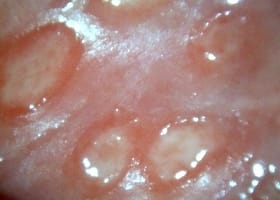Herpes is a condition that is very painful to deal with, not to mention its great impact on the physical, emotional, and mental health of an individual who is suffering from it. These days, there is no cure for herpes yet, and this is one of the main reasons being in such a predicament can be very devastating. But there is still hope. If you take a look at the Erase Herpes E-book, you will realize that there are many things that you can do to treat herpes and possibly eliminate the virus.
What is the best treatment for herpes?
 While there is no known cure yet for herpes, this particular viral disease can be contained despite the fact that the virus will remain in the body. This is why outbreaks may occur every now and then for quite a while. But if you educate yourself with the proper things that you need to do, you will definitely be able to control your condition. You can even prevent the flare-up from happening.
While there is no known cure yet for herpes, this particular viral disease can be contained despite the fact that the virus will remain in the body. This is why outbreaks may occur every now and then for quite a while. But if you educate yourself with the proper things that you need to do, you will definitely be able to control your condition. You can even prevent the flare-up from happening.
A lot of people are wondering what the best treatment for herpes is. Actually, it all depends on your condition and the occurrence of the breakout.
Here are some useful tips on how you can treat herpes.
Prevent the outbreak
As the old saying goes, “prevention is better than cure”. The best treatment that you can have for herpes is to prevent its outbreak. There are numerous strategies that you can utilize to do this. One of which is to reduce stress in your everyday life as stress is linked to frequent herpes flare-ups. You also have to monitor the foods that you eat. As much as possible, avoid taking in processed foods as well as artificial sweeteners. Instead, try to increase your intake of lysine.
Start the treatment as soon as possible
Once you have noticed some symptoms of herpes like itching, pain, and burning sensation, it is necessary that you start treating it right away. You can utilize topical cream or oral medication which you can purchase over the counter. You can also consult a doctor so he or she can prescribe an antiviral medication for you.
Maintain cleanliness
 Another way for you to treat herpes is to maintain good hygiene. You need to keep the cleanliness of your body especially the area that is affected. Avoid touching it if the wounds are still open. But make sure that it is clean and dry all the time so it won’t spread.
Another way for you to treat herpes is to maintain good hygiene. You need to keep the cleanliness of your body especially the area that is affected. Avoid touching it if the wounds are still open. But make sure that it is clean and dry all the time so it won’t spread.



 Keeping the pain under control is invariably vital after surgery. Some patients just don’t take their painkillers as prescribed. Some fear getting addicted, others feel that it’s a sign of weakness, and still, others don’t like drugs or how drugs make them feel. What they don’t understand is that they are exposing themselves to further infections. Do you know that if you’re in too much pain to cough, then you’re at high risk of catching pneumonia? Or, that if you’re in too much pain to walk, then you’re at risk of catching pneumonia and blood clots? Well, now you know.
Keeping the pain under control is invariably vital after surgery. Some patients just don’t take their painkillers as prescribed. Some fear getting addicted, others feel that it’s a sign of weakness, and still, others don’t like drugs or how drugs make them feel. What they don’t understand is that they are exposing themselves to further infections. Do you know that if you’re in too much pain to cough, then you’re at high risk of catching pneumonia? Or, that if you’re in too much pain to walk, then you’re at risk of catching pneumonia and blood clots? Well, now you know.
 t. A healthy diet will help in healing your gut and also boosting your body immune system. A leaky gut and a weak immune system are dangerous for someone with Lyme disease. Try as much as possible to stay away from processed foods because they make your gut worse. Include your diet with a lot of fruits and vegetables for a better immune and digestion.
t. A healthy diet will help in healing your gut and also boosting your body immune system. A leaky gut and a weak immune system are dangerous for someone with Lyme disease. Try as much as possible to stay away from processed foods because they make your gut worse. Include your diet with a lot of fruits and vegetables for a better immune and digestion.


 st people cannot distinguish among various unusual growths that occur on the foot. These include blisters, corns, plantar warts, hammertoes, and neuromas. These conditions can be caused due to reasons like improper hygiene, constrictive footwear and deformed growth of the foot.
st people cannot distinguish among various unusual growths that occur on the foot. These include blisters, corns, plantar warts, hammertoes, and neuromas. These conditions can be caused due to reasons like improper hygiene, constrictive footwear and deformed growth of the foot.